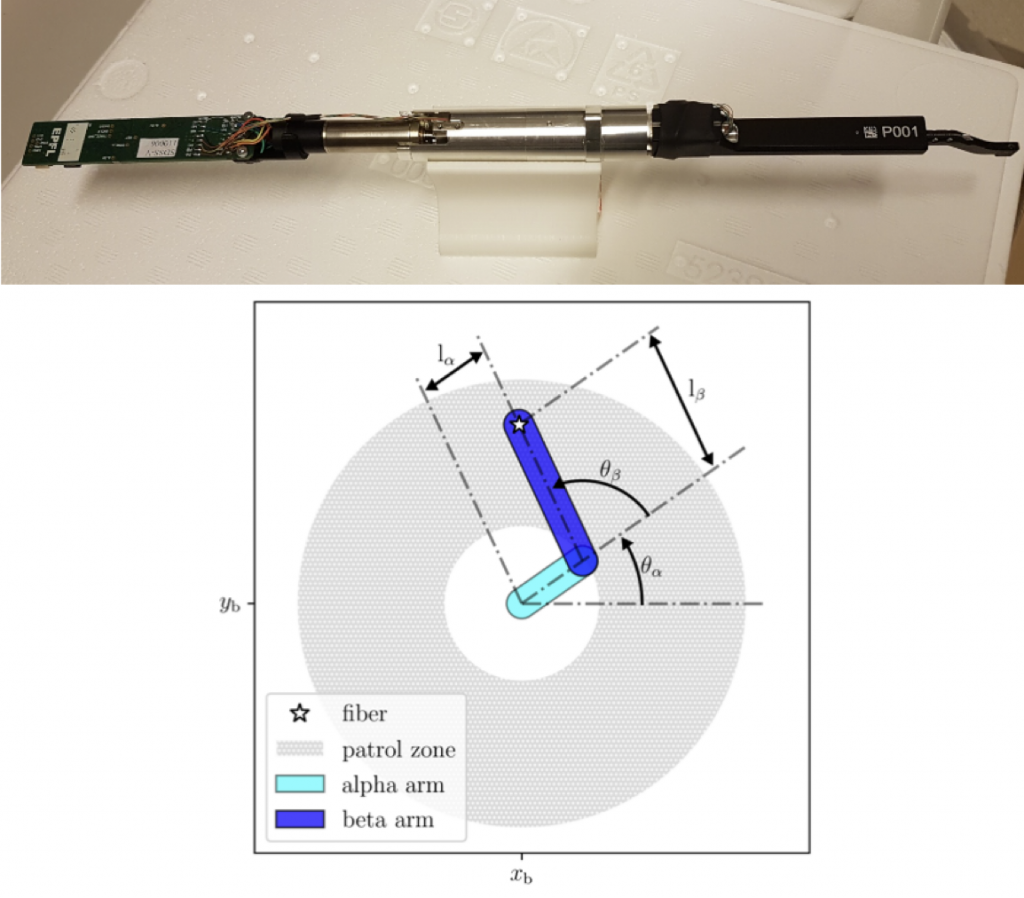In the era of Fiber Positioning System (FPS) in SDSS, fibers are not longer plugged into plates to lock their position, instead a set of 2-arm robots hold the APOGEE and BOSS fibers along with a back-illuminated fibers to track their position.

Fiber positioner (top) and its patrol area (bottom). Taken from Sánchez-Gallego et al. 2020
Once the input tables have been crossmatched, and the scientific program groups have selected the targets for their cartons, we create our field observing plan, which is constantly changing to consider information obtained from previous observations, changes in the carton versions, and instrumental requirements. This process starts with tiling the sky in a series of overlapping fields more or less evenly distributed along with a few special locations.
Then, to simplify survey planning we split our targets into a set of cadences (rhythms of observation) specific to a lunation using the following convention for the name:
{lunation}_{n_epochs}x{n_exposures_per_epoch}
Where:
lunation: dark for moon_illumination<35% or moon_alt<0; bright otherwise
n_epochs: number of different epochs (roughly nights) in which the target should be observed
n_exposures_per_epoch: number of 15 minute exposures to obtain for each epoch
So for example if there is a set of stars to be observed at bright time at 12 different nights, and for each epoch we want to take 4 exposures, those targets will have a cadence of bright_12x4.
Then an actor called Robostrategy (Blanton et al. in prep) determines the field cadences and the targets that should be observed at each exposure maximizing the overall number of targets observed considering their observing constraints (the target cadences) and total available time as a function of lunation and local sidereal time (LST). For each field/cadence combination we chose the set of targets per exposure that maximizes the targets observed for that field. Then we choose the set of field/cadence pairs that maximize the targets observed in the survey given the observational constraints (target cadences, time available per LST/lunation)
After an overall observing plan has been developed by Robostrategy a group of programs translates this into a realistic observing plan night by night. Roboscheduler develops a real time scheduler that identifies the optimal field to observe given the designed strategy (and it is accessible by the observers). Observesim takes a given robostrategy plan and determines the optimal moments of observation for each field/exposure combination considering realistic weather and observing conditions. And Kronos is the observers interface that allows them to check Roboscheduler results for the night and update/adjust if needed.
See Sky Calibration and Standard Calibration for descriptions on how sky fields and standard stars were selected for observations.
